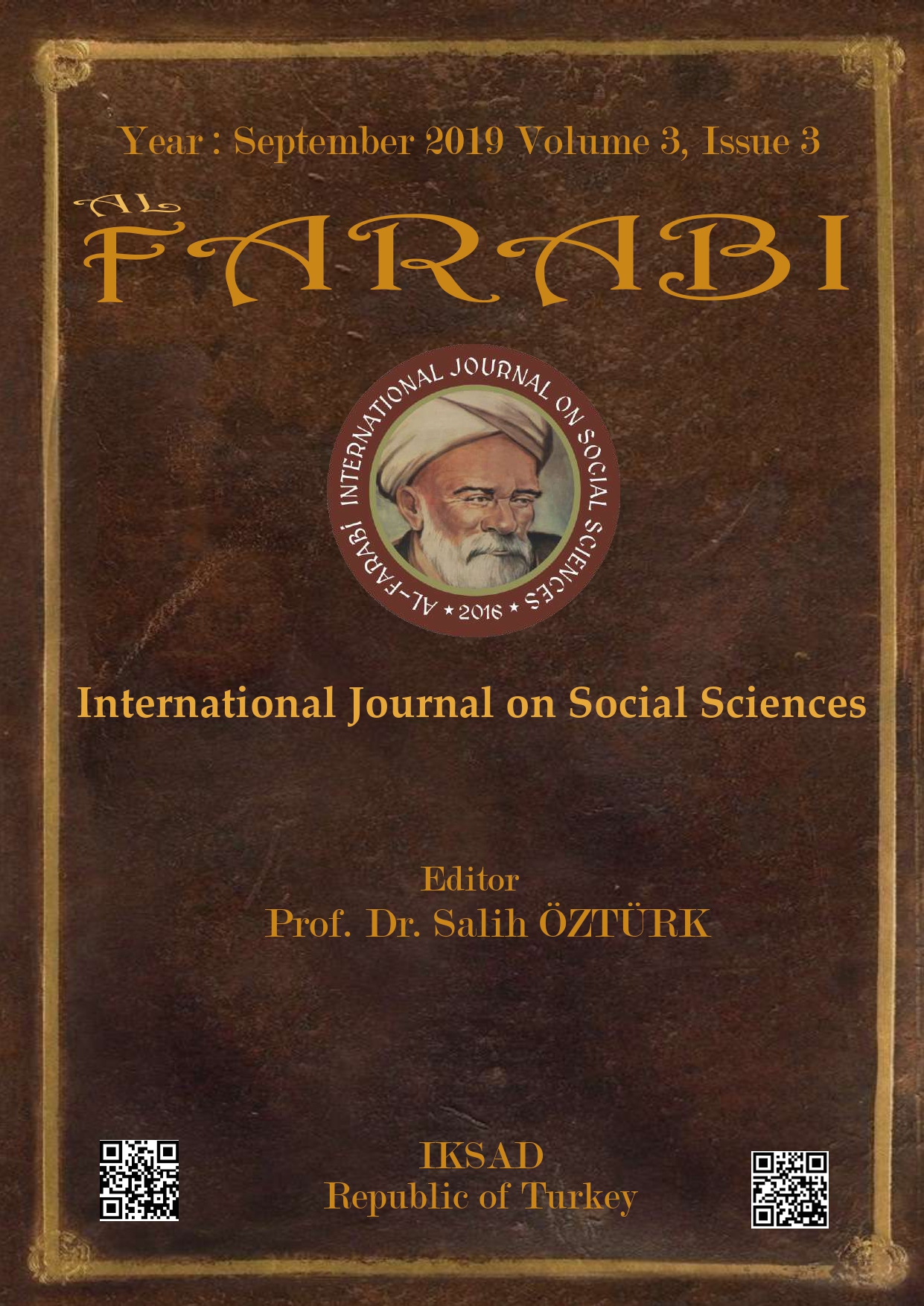BAZI FONETİK ÖZELLİKLERİN DOĞU ANADOLU AĞIZLARINDA KARŞILAŞTIRMALI ANALİZİ
Anahtar Kelimeler:
Azerbaycan Türkçesi, Doğu Anadolu, Ağızlar, FonetikaÖzet
Ağız ve şivelerde bir çok fonetik farklılık vardır ki, onlara yazı dilinde rastlamıyoruz. Bu farklar Doğu Anadolu ağızlarında çoktur ve bu çalışmada da farkları Azerbaycan Türkçesiyle karşılaştırmalı analiz edilmiştir. Türkiye Türkçesinde kalın ve ince ünlülerin uyumundan dışarıda kalan bir çok alıntı kelimelerin Azerbaycan dilinde uyum yasasına uyduğunu görebiliriz. Örneğin: Türkiye Türkçesinde (TT) avare<Azerbaycan Türkçesinde avara, (TT) badem<(AT) badam, (TT) cevap<(AT) cavab, (TT) ezan<(AT) azan, (TT) helal<(AT) halal, (TT) kale<(AT) ĝala, (TT) selam<(AT) salam. Azerbaycan Türkçesinde olduğu gibi Doğu Anadolu ağızlarının bir çokunda da kalınlık ve incelik uyumundan dışarıda kalan alıntı kelimelerin ünlü benzerlikleri sonuçunda ünlü uyumuna bağlandığı görünür. Örneğin: Erzurum ağzında: (Şenkaya-Olur Türkmen ağızlarında): amanat<emanet (ӓmanӓt), ĝayfa<kahve (ĝӓhve), habar<haber (ĥӓbӓr), mayana<muayine (müayinӓ). Erzincan ağzında: adat<adet (ӓdӓd), manavra<manevra (manevr), ataş<ateş (atӓş), hayrat<hayret (heyrӓt), satan<zaten (onsuzda). Kars, Ardahan ve İğdır ağızlarında: cahal<cehal (cahıl), ĝuluba<kulübe (daĥma), satan<zaten (onsuzda), ataş<ateş (atӓş), sağabı<sahibi (sahibi). Van ve Bitlis ağızlarında: habar<haber (ĥӓbӓr), baĥhça<bahçe (bağça), menfeet<menfaat (mӓnfӓӓt) Elazığ ağzında: tana<tane (dӓnӓ), ataş<ateş (atӓş), barabar<beraber (bӓrabӓr), ecele<acele (tӓlӓsik), mekeme<mahkeme (mӓhkӓmӓ), masala<mesala (mӓsӓlӓn) ve d.




